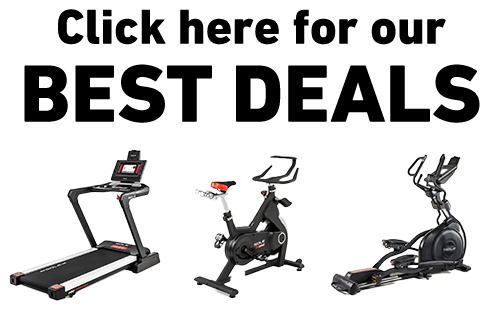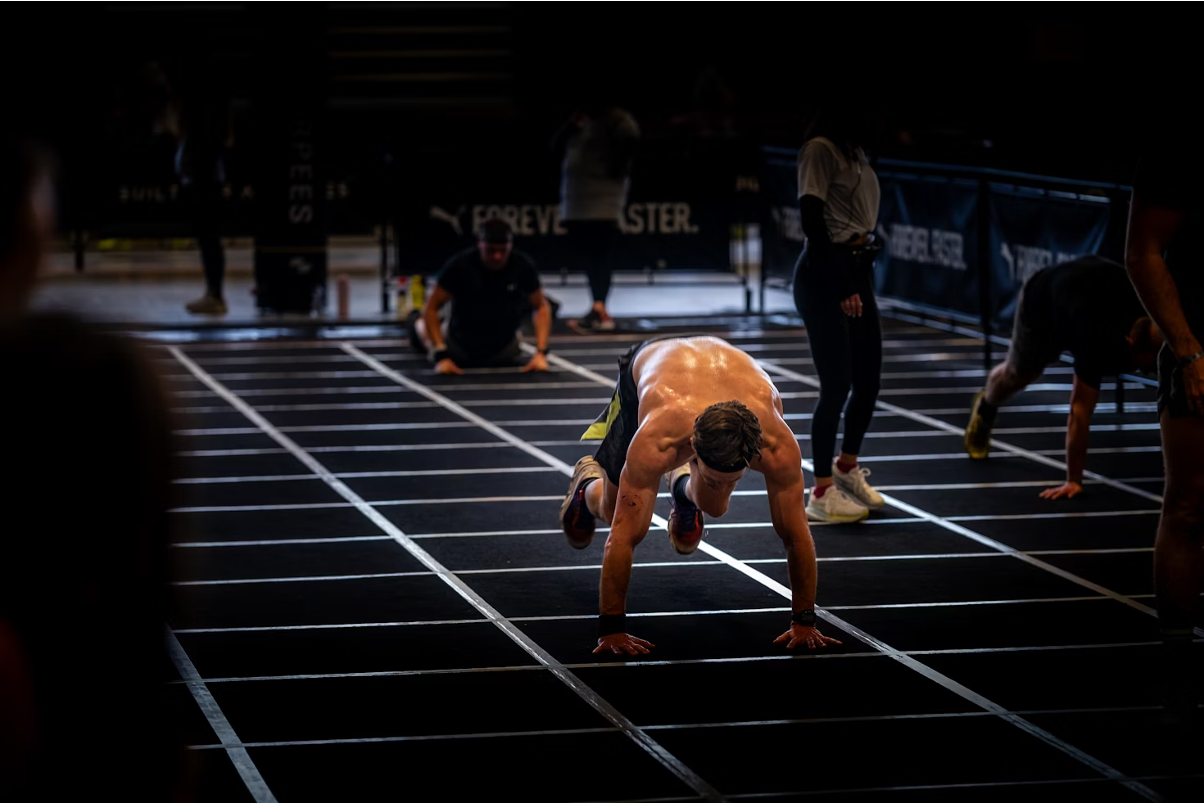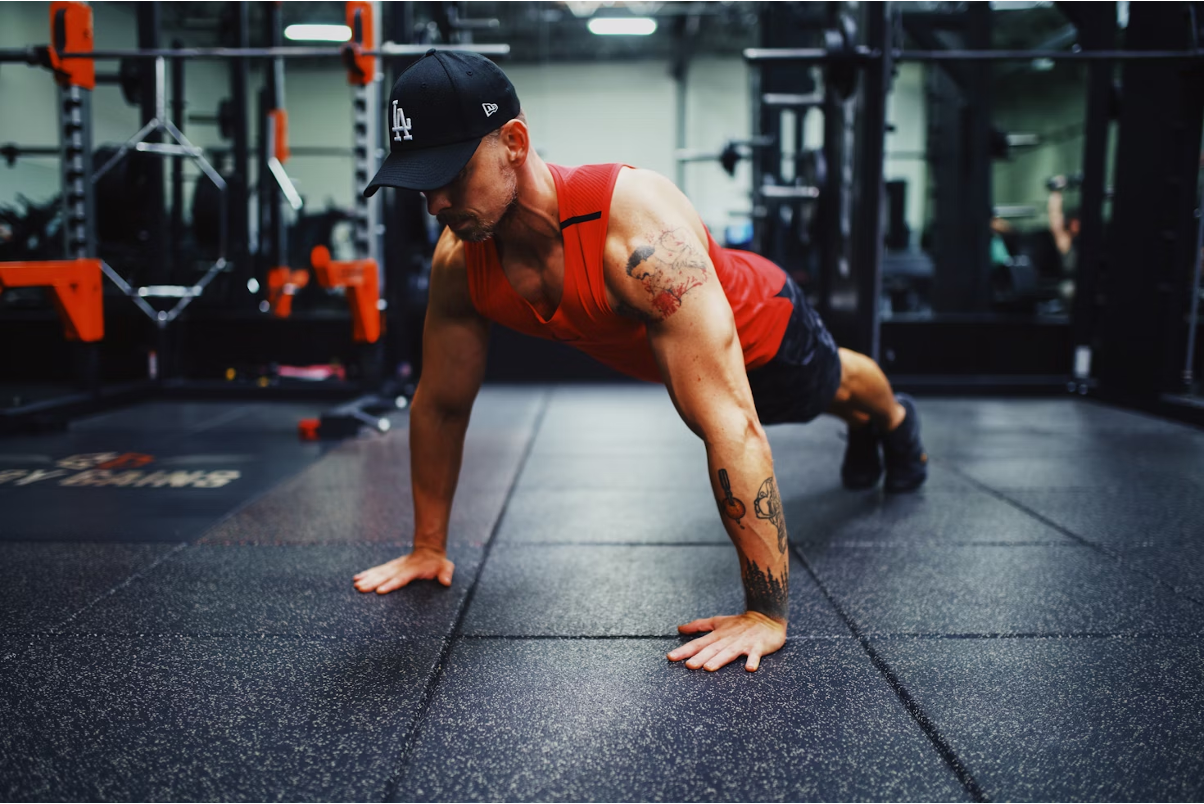Key Takeaways
- Modified burpees give you a full-body workout without killing your knees.
- Step-back burpees remove the jumping while still working your core, upper body, and legs.
- Using elevated surfaces reduces how deep you need to bend your knees.
- Proper form matters even with modifications, to prevent more knee damage.
- SOLE's Equipment Mat provides essential joint cushioning for modified burpees, while the SW116 Weight Bench creates perfect elevated surfaces for progressive knee-friendly variations.
Burpee Benefits Without the Knee Pain
Traditional burpees combine a squat, plank, push-up, and jump into one fluid movement that challenges your entire body. They crank up your heart rate, build muscular endurance, and burn serious calories.
The problem? Each component of the standard burpee can stress your knees, especially the deep squat position and the high-impact landing from the jump. Modified burpees keep the metabolic benefits while removing the high-impact elements that aggravate knee conditions.
|
At SOLE, we're proud to offer the best exercise equipment for your home or gym. Our machines are built to meet the highest quality and performance standards, making them perfect for fitness enthusiasts at any level. SOLE Products
|
Why Traditional Burpees Hurt Your Knees
The best modification allows intense work without pain, not necessarily the one closest to traditional burpees.
High-Impact Landing Forces
The jumping component creates significant landing forces. When you jump and land, your knees absorb forces equal to 2 to 4 times your body weight. For someone with existing knee issues like meniscus tears, arthritis, or patellar tendonitis, these impact forces can trigger pain and potentially worsen the condition.
Each landing creates compression and shearing forces within the knee joint. Over time, especially with improper form or pre-existing conditions, this repetitive stress can damage the joint structures, including cartilage, ligaments, and tendons.
Deep Knee Flexion Challenges
The squat portion requires deep knee bending, which increases pressure on all structures of the knee joint. Research shows that knee compression forces increase dramatically as knee flexion deepens beyond 90 degrees. For those with patellofemoral pain syndrome (runner's knee) or osteoarthritis, this deep flexion often causes immediate pain and discomfort.
Common Knee Issues That Make Burpees Difficult
Several knee conditions make traditional burpees particularly challenging:
- Meniscus tears create pain during rotational forces in the plank-to-squat transition
- Patellar tracking issues cause the kneecap to move painfully during rapid transitions
- Arthritis sufferers experience increased inflammation after high-impact jumping
Even without a diagnosed condition, knee pain during burpees shouldn't be ignored. It's your body's warning signal that the movement may be causing damage.
The following modifications address these specific problems while maintaining the essence of the exercise.
1. Step-Back Burpee Modification
The step-back burpee is your gateway to maintaining burpee benefits while significantly reducing knee stress. You usually begin this workout with a plank.
In step-back burpee, instead of jumping your feet back and forth, you'll step one foot at a time, creating a controlled movement pattern that's easier on your joints.
How to Perform This Knee-Friendly Version
Start standing with feet shoulder-width apart and knees slightly bent. Place your hands on the floor in front of you, then step one leg back at a time to reach a plank position. Your body should form a straight line from head to heels.
From the plank, perform a push-up if able, or modify by dropping to your knees first. Step one foot forward at a time to return to a squat position, then stand up straight. For an optional cardio boost, add a gentle heel raise at the top instead of a jump.
The beauty of this modification lies in its versatility. You can adjust the speed to match your fitness level, move quickly for greater cardiovascular challenge or slow down to focus on strength and control. The step-back approach eliminates jarring impact while still recruiting all major muscle groups.
Form Tips for Maximum Safety
Keep these points in mind:
- Engage your core throughout the entire movement
- Position hands directly under shoulders during plank and push-up
- Step feet wide enough in plank for stability
- Place your foot flat when stepping forward, not on toes
Common mistakes include rushing through the movement or letting hips sag during the plank. Take time to master proper form before increasing speed.
Who Benefits Most from Step-Back Burpees
This modification works exceptionally well for:
- People with mild to moderate knee discomfort
- Those with patellar tracking issues
- Anyone recovering from minor knee injuries
- Beginners building strength and coordination
- Those with meniscus irritation during rotational movements
2. Elevated Surface Burpee Modification
Using an elevated surface like a workout box, bench, or sturdy step reduces the range of motion required at the knee joint.
This variation is a game-changer for many people who thought burpees were permanently off their exercise menu.
Using a Box, Bench or Chair for Support
Select a sturdy surface between knee and waist height. Higher surfaces provide more knee relief, so begin taller if you have significant pain. Position the bench or box in front of you at a comfortable distance.
Begin by placing both hands on the elevated surface instead of the floor. Step or walk your feet back one at a time until you're in an inclined plank position. Perform a modified push-up against the surface if your strength allows. Step your feet back in, then return to standing.
This approach dramatically reduces knee flexion depth while still providing core and upper body challenge. The elevated surface creates an incline that reduces body weight on your knees during the movement.
Good surface options include:
- Weight bench: Ideal height and stability
- Plyo box: Adjustable heights for progression
- Sturdy chair: Home option (ensure it won't slide)
- Smith machine bar: Gym option with precise height adjustment
Proper Technique & Positioning
Key alignment points:
- Keep hands under shoulders on the elevated surface
- Form a straight diagonal line from head to heels
- Avoid letting hips sag or pike up
- Focus on controlled movement, not speed
- Land softly when stepping
Gradually Lowering the Height as You Progress
As your knee health improves and strength builds, progressively lower your support surface. Start with a counter or high bench, then move to a standard weight bench, then a low step, and eventually the floor.
This gradual approach lets your joints adapt while building supporting muscles. If you experience increased pain or swelling, maintain your current height longer before progressing.
3. No-Jump Burpee Modification
The no-jump burpee completely eliminates the high-impact landing that makes traditional burpees problematic for bad knees.
This version focuses on strength and mobility while finding alternative ways to elevate your heart rate.
Eliminating the High-Impact Component
Start standing with feet shoulder-width apart. Lower into a quarter squat (not full depth) by hinging at hips and keeping knees behind toes. Place hands on the floor and step back one foot at a time to plank position.
Perform a push-up if able. Step feet forward one at a time, then stand by pushing through your heels. Instead of jumping, perform a calf raise by rising onto the balls of your feet while reaching arms overhead.
This modification works because it eliminates the 2 to 4 times body weight impact force during landing. The controlled movement lets you focus on quality rather than battling through pain.
Adding Alternative Cardio Elements
To maintain cardiovascular challenge without jumping, try:
- Standing jabs or punches at the top
- Rapid arm circles or overhead presses with light weights
- Brief marching in place with high knees (minimal impact)
- Increasing overall movement speed
The key is finding cardio elements that don't stress knees but still challenge your cardiovascular system.
Transition Techniques to Maintain Flow
Smooth transitions maximize effectiveness:
- Maintain continuous, flowing movement
- Initiate stepping from your core, not just legs
- Use hamstrings and glutes to pull leg forward
- Keep consistent breathing pattern
- Exhale during exertion, inhale during easier phases
Getting the Most From Modified Burpees
Maintaining Proper Form Throughout
Form becomes even more critical when working around limitations:
- Keep core engaged to protect lower back
- Maintain neutral spine position
- Distribute weight evenly in plank
- Track knees in line with toes
- Never let knees cave inward or splay outward
Appropriate Workout Volume and Frequency
Start conservatively:
- 2 to 3 sets of 5 to 8 repetitions
- Allow 48 hours between burpee sessions
- Monitor knee response during and after workouts
- Mild muscle soreness is normal
- Joint pain lasting hours means reduce volume
Gradually increase by adding 1 to 2 reps per set each week. Most people with knee issues do best with burpees 2 to 3 times weekly rather than daily.
Progressive Overload Strategies That Protect Your Knees
Progression doesn't mean returning to traditional burpees. Instead:
- Increase movement tempo
- Add light resistance (5% bodyweight vest)
- Incorporate balance challenges
- Combine with other exercises in circuits
- Focus on proficiency within your modification
Perform Comfortable Modified Burpees with SOLE Equipment
Ready to get all the benefits of burpees without the knee pain? SOLE's equipment makes these modifications even more effective and comfortable.
The SOLE Equipment Mat is a game-changer for anyone doing modified burpees with knee issues. Its 1/4" PVC vinyl and nitrile rubber construction provides crucial cushioning when you're stepping back into planks or placing your knees down for modified push-ups. That extra padding makes a huge difference when you're protecting sensitive joints.
For the elevated surface burpee modification, the SW116 Weight Bench offers the perfect stable platform. With 9 adjustable backrest and 5 seat positions, you can find the exact height that reduces knee flexion to a comfortable level. Start with the bench at a higher angle and gradually lower it as your knees get stronger; it's like having multiple modification levels in one piece of equipment. The bench's 550-pound capacity means it won't wobble or shift during your movements.
The best part? The SOLE app includes modified workout routines specifically designed for people with joint limitations. You'll find guided burpee modifications and alternative exercises that deliver the same full-body benefits without the impact.
Frequently Asked Questions (FAQ)
Can you still get a good workout with modified burpees?
Absolutely. Modified burpees engage the same major muscle groups and energy systems as traditional burpees. Research shows exercise intensity drives fitness improvements, not specific movement patterns.
By performing modified burpees with proper form and appropriate intensity, you achieve comparable cardiovascular and muscular benefits while protecting your knees.
How often should you do modified burpees if you have knee problems?
Most people with knee issues do best with modified burpees 2 to 3 times per week, allowing at least one recovery day between sessions.
This frequency provides sufficient stimulus while giving joints adequate recovery time. Pay attention to how your knees feel the day after; increased pain or stiffness means you need more recovery time.
Will modified burpees help strengthen knees over time?
Modified burpees can contribute to knee health by strengthening supporting muscles - quadriceps, hamstrings, and glutes. Stronger muscles help stabilize the knee joint and improve biomechanics.
However, complement burpees with targeted knee exercises like wall sits, straight leg raises, and resistance band work for complete conditioning.
Should you wear knee sleeves or braces when doing modified burpees?
Knee sleeves provide beneficial compression and feedback during modified burpees, potentially reducing minor pain and increasing stability. They help those with mild tracking issues or general discomfort.
Choose moderate compression without restricting movement. Use structural braces only under medical guidance, as they can alter movement patterns.
How does SOLE equipment specifically help with burpee modifications for bad knees?
The SOLE Equipment Mat is a lifesaver for modified burpees when you have knee issues. That cushioning actually reduces the impact force when you're stepping back into planks or kneeling for push-ups.
The SW116 Weight Bench is perfect for elevated surface burpees because of its adjustability. Remember how we mentioned earlier to start with higher surfaces and gradually lower them? Well, this bench has 9 different positions, so you can literally progress through different heights as your knees improve.
Start with it almost vertical for minimal knee bend, then gradually lower it week by week. It's way more stable than using random chairs or boxes that might slip.




Leave a comment
This site is protected by hCaptcha and the hCaptcha Privacy Policy and Terms of Service apply.